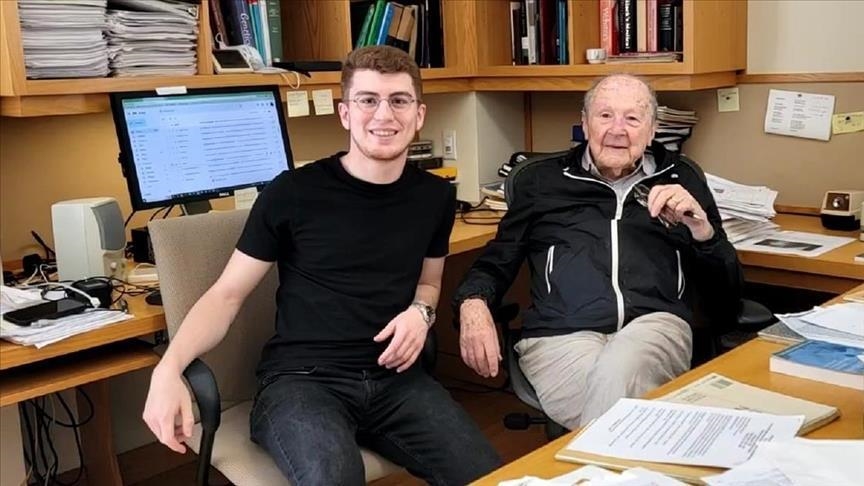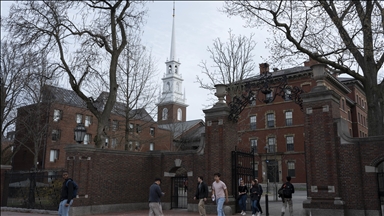Breakthrough discovery of young Turkish physicist at Harvard sheds light on origins of life
26-year-old Furkan Ozturk's work, published in Science Advances journal, revolves around the concept of homochirality
 h.D. in Physics at Harvard University, Furkan Ozturk
h.D. in Physics at Harvard University, Furkan Ozturk
ANKARA
On the verge of completing his Ph.D. in Physics at Harvard University, a young Turkish man has made a groundbreaking discovery about the origin of life on Earth, generating significant excitement among scientists.
The discovery, expected to provide insights into the origins of life on Earth and the possibility of extraterrestrial life, revolves around the concept of homochirality, which explains the preference for specific mirror-image forms of molecules in living organisms.
Furkan Ozturk, 26 and his team's research has been published in the peer-reviewed scientific journal Science Advances. They have made progress in understanding the origin of biological handedness and propose that magnetic minerals on early Earth may have played a role in selecting one mirror-image form of biomolecules over the other.
In 1848, French chemist Louis Pasteur introduced the concept of homochirality, which explains that certain molecules necessary for life exist in mirror-image forms, just like the left and right hands. However, despite 175 years of research, the origin of this property remained one of biology’s great mysteries.
Although more work is needed to fully unravel the mystery, scientists believe this discovery is a crucial step in understanding the fundamental processes that initiated the formation of life.
'A real breakthrough'
"It’s a real breakthrough. Homochirality is essential to get biology started, and this is possible—and I would say very likely – solution," said Nobel laureate biochemist Jack Szostak, according to the journal.
Ozturk, who earned a bachelor’s in physics at Bilkent University in the Turkish capital Ankara, has been doing research on the origins of life for approximately two-and-a-half years at Harvard.
'We begin to see first traces of life on Earth'
"Approximately 4 billion years ago, roughly 500 million years after the formation of the solar system and our Earth, we begin to see the first traces of life on Earth," the 26-year-old physicist told Anadolu.
His experimental studies aim to shed light on this mystery, which the journal recognized as one of the 125 greatest problems in the natural sciences, he added.
About the impact of his discovery, he said: "Our discovery sheds light on the origin of life, a major mystery in nature. It's like solving a puzzle, where we have limited evidence from 4 billion years ago. Our study contributes a significant piece to understanding life's origin.
"Although we’re unsure how it all fits together, this discovery will help answer questions and provide clues about life's beginnings. It could also offer insights into life on other planets. Understanding Earth's life formation enhances our knowledge of conditions for life elsewhere. This knowledge guides the search for extraterrestrial life, although certainty remains a challenge, it's possible,” he added.
Asked about the potential window of opportunity of this discovery for the scientific world, Ozturk said: "Honestly, I believe this discovery can lead us to the point where we can create life in a laboratory setting. My goal is to recreate the conditions of life's origin in a laboratory and witness how life emerges with my own eyes."
Anadolu Agency website contains only a portion of the news stories offered to subscribers in the AA News Broadcasting System (HAS), and in summarized form. Please contact us for subscription options.







